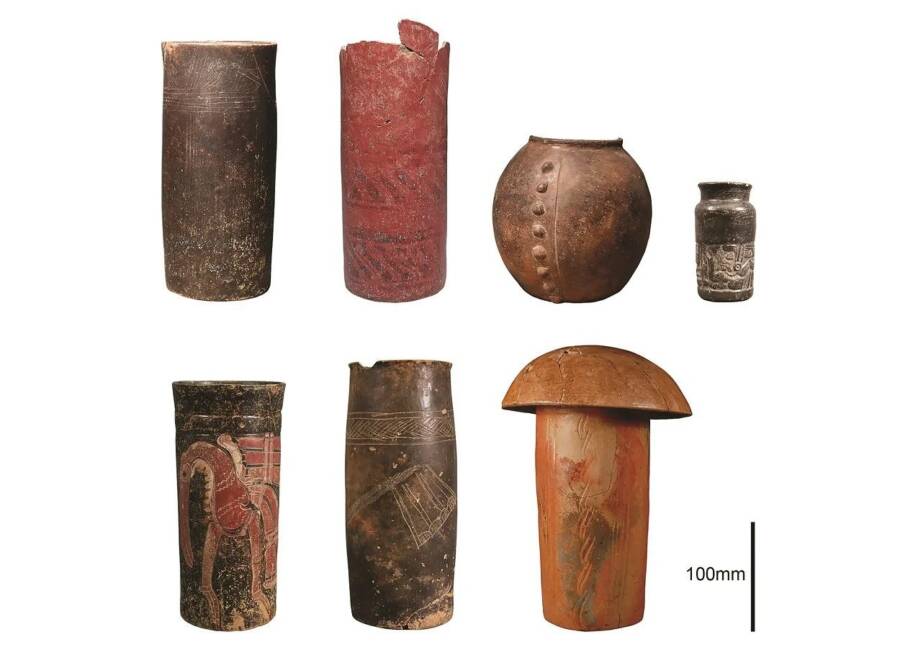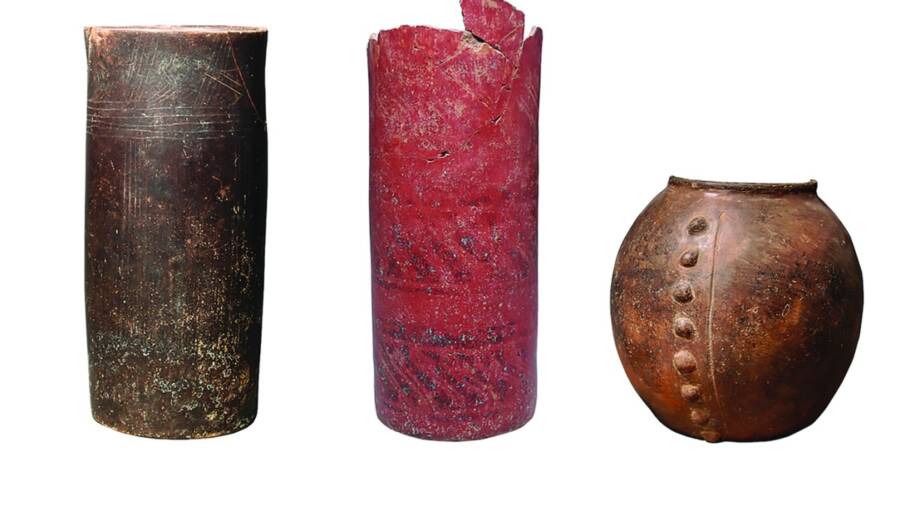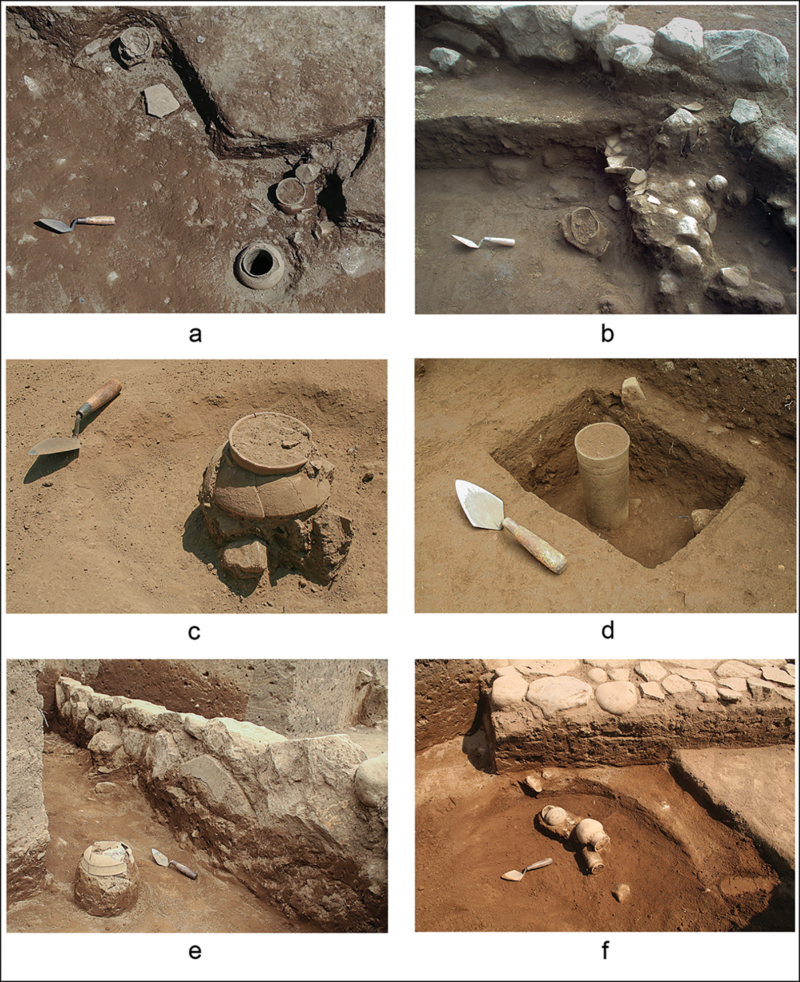The ceramic vessels found in present-day Guatemala contained traces of nicotine residue, evidence that ancient people in Mesoamerica may have consumed tobacco during rituals.

AntiquityOf the seven ceramic vessels, three had traces of tobacco.
Tobacco use in Mesoamerica has been well documented by contemporary witnesses and modern-day studies. But little physical evidence of ritual tobacco use has been found — until now.
According to a new study in Antiquity, researchers have found traces of nicotine in 1,000-year-old ceramic vessels unearthed in present-day Guatemala, suggesting that people ritualistically consumed tobacco centuries ago.
Traces Of Tobacco In The Ceramic Vessels
Between 2006 and 2007, researchers discovered a trove of ceramic vessels at the Cotzumalhuapa archaeological site, which was once the location of one of Mesoamerica’s “greatest cities.” When researchers chemically analyzed the interior of seven of the vessels, they were surprised to find traces of tobacco in three of them.
“We knew that tobacco was a very important substance employed for a variety of ritual and therapeutic purposes in ancient Mesoamerica and across the New World,” study co-author Oswaldo Chinchilla Mazariegos, an associate professor of anthropology and the director of undergraduate studies in archaeology at Yale University, said in a statement.

AntiquityThe vessels date between 650 and 950 C.E.
He continued: “However, archaeological evidence is scarce because the remains of tobacco rarely preserve well.”
The discovery of nicotine in the ceramic vessels is all the more surprising because it suggests that people in Mesoamerica were not just smoking it like a cigarette but also consuming it as a liquid.
“It was a surprise when three of the seven vessels that we tested yielded positive results for nicotine, indicative of tobacco. This was unexpected because the shape of the vessels suggested that they were used to contain and consume liquids,” Chinchilla told All That’s Interesting in an email.
He and his team tested the vessels for other substances like those present in cacao and chili peppers but their “analyses failed to detect the presence of any of these plant secondary metabolites in the samples.”
As Chinchilla told All That’s Interesting, the vessels are likely “archaeological evidence of consuming tobacco infusions.”
But for what purpose?
How Ancient People Used Tobacco
According to Chinchilla, the exact purpose of the “tobacco infusions” is unclear. “We cannot know whether they did it habitually or only in selected ceremonial occasions,” he told All That’s Interesting.
However, he noted that the latter is “more likely.”

AntiquityThe vessels were first discovered between 2006 and 2007, but recent chemical analysis revealed unexpected traces of nicotine.
He and his co-authors wrote that nicotine is “toxic and potentially lethal” when consumed orally in high qualities. That’s why it’s often done during rituals, to “induce deep sleep, visions, and divinatory trances.”
In Cotzumalhuapa, researchers suspect that the tobacco may have been used during some kind of purification ritual.
“The proximity of sweat baths in the same architectural group as the cache deposits containing cylindrical vases at Cotzumalhuapa suggests that the tobacco infusions deposited in these vessels may have been employed in curing and purification rituals,” the study explains.
Their study further notes that the consumption of tobacco in liquid form is “not the most common method of use throughout the Americas,” but it has been documented before in the Amazon and the Guianas. Other Mesoamerican cultures used tobacco to communicate with spirits, diagnose disease, and achieve fearlessness during sacrifices. But though tobacco was important to ancient cultures, it’s scarce within the archaeological record.
“[O]nly one vessel from the Maya area (an unprovenienced flask lacking exact known archaeological origin) had previously tested positive for nicotine in residue analysis,” Chinchilla told All That’s Interesting. “Future work may reveal similar results at other sites. At present, we cannot tell whether this use of tobacco was widespread.”
Moving forward, he and his co-authors are eager to learn more about “ritual life” in Cotzumalhuapa itself. As Chinchilla told All That’s Interesting, it was one of Mesoamerica’s “greatest cities” in the Late Classic period (650 C.E. to 950 C.E.) and a place where art and culture thrived. So, what were its rituals like? Archaeologists are hoping to learn more soon.
After reading about the ceramic vessels discovered in Guatemala with traces of tobacco, discover the story of Camazotz, the ancient Maya god known as the “Death Bat.” Or, look through these stunning photos of South and Central America taken by explorers in the 19th and 20th centuries.





